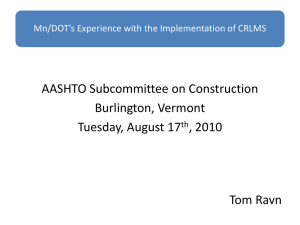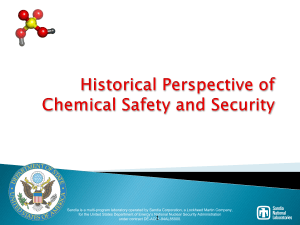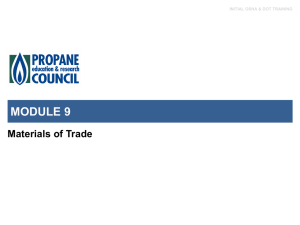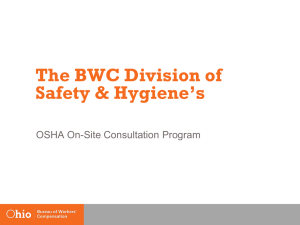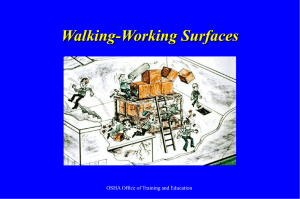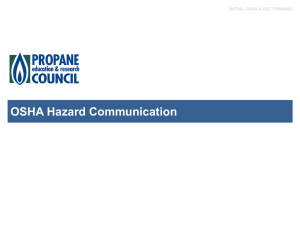MODULE 1: - propane.net
advertisement
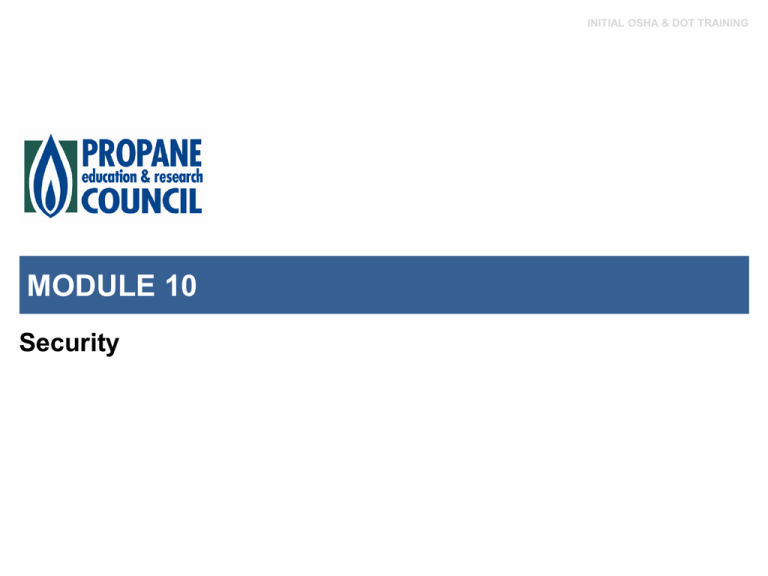
INITIAL OSHA & DOT TRAINING MODULE 10 Security INITIAL OSHA & DOT TRAINING Module 10 – Security Introduction The Transportation Security Administration (TSA) and the Hazardous Materials Regulations (HMR) require every propane company to have a hazardous materials security plan. This plan must identify potential security risks and areas that may be vulnerable while on the job, as well as appropriate measures to address them. After completing this module, you will be able to: Identify the requirements for a security plan. Describe the ways you can enhance transportation security. 2 INITIAL OSHA & DOT TRAINING LESSON 1 Security Plan Requirements 3 INITIAL OSHA & DOT TRAINING Security Plan Requirements Introduction Security plans must provide specific measures to address any potential security risks. These measures will vary depending on the nature and level of the potential threat. At a minimum, every security plan must include the following: Personnel Security measures to confirm information provided by job applicants for positions that involve access to and handling of hazardous materials. The confirmation system must be consistent with federal and state laws and requirements concerning employment practices and individual privacy. Unauthorized Access measures to address any risk of unauthorized people gaining access to hazardous materials or transport vehicles. En Route Security measures to protect shipments of hazardous materials during all stages of transport, including temporary storage. LESSON 1 4 INITIAL OSHA & DOT TRAINING Security Plan Requirements, cont. Your company must retain a copy of its written security plan while it is in effect. Employees who are responsible for implementing the plan must receive copies of the portion pertaining to their tasks and responsibilities. Depending on the nature of their work, employees may be required to demonstrate a “need to know” for security plan details. Some may also be required to undergo a background investigation or security clearance. All employees are responsible to ensure that their security plan or any details about it do not fall into the hands of any unauthorized person. In some cases, this may include coworkers. Security plans must be updated whenever there are newly assessed risks. For example, updates may be required when changes to the workplace environment introduce new potential risks. Employees affected by this update of the security plan are required to be trained accordingly. LESSON 1 5 INITIAL OSHA & DOT TRAINING Security Training If you are designated to perform security-related tasks, you will receive training on how to implement your portion of the security plan. This training must include security objectives, specific security procedures, individual responsibilities, actions to take during a security breach, and your company’s security structure. All employees must receive security awareness training within 90 days of their employment. This training should include: Security risks associated with hazardous materials and their transportation. Methods to improve transportation security. Recognizing and responding to possible security threats. LESSON 1 6 INITIAL OSHA & DOT TRAINING Security Training, cont. You will also receive in-depth training specific to the type of materials you handle. It is critical to know and fulfill your responsibilities as designated by the plan. TSA also requires drivers to undergo a security threat assessment, including fingerprinting, an FBI criminal background check, a security/terrorism check, and immigration status verification. Always cooperate fully with your company as these background checks and training are required by law. LESSON 1 7 INITIAL OSHA & DOT TRAINING Identifying Security Risks In the past, the propane industry was concerned mostly with preventing theft, vandalism, product leaks, and fire. The risk of terrorism has broadened the range of threats and increased the need for greater security. Recognizing and responding to possible threats and security risks are important step in preventing any potential criminal or terrorist acts. Areas within your facility that may be vulnerable include: Access points, such as terminal gates and entrances. Perimeters and fenced-in areas. Doorways and windows. Communication and records management areas. Limited-access and restricted areas. Physical facilities and equipment. Vehicles and inventory that could be used as weapons. LESSON 1 8 INITIAL OSHA & DOT TRAINING Identifying Security Risks, cont. Areas within your community that may be vulnerable to threat include: Historical monuments. Local, state, and federal government buildings. Water towers and reservoirs. Gas stations, refineries, and industrial locations. Transportation hubs including train stations, bus terminals, and airports. Always remain aware of your surroundings to help identify potential targets and threats, both at your job and in your community. LESSON 1 9 INITIAL OSHA & DOT TRAINING On-Site Security Risks Pay close attention to your surroundings and be wary of any objects, people, or behavior that appear out of place or suspicious. Remember, it is both your right and your responsibility to report any potential threat to the proper authorities. While at your job, always try to be aware of: Unauthorized people trying to gain access to equipment or restricted areas. Anyone appearing extremely nervous, agitated, or generally suspicious. Disgruntled employees. Unauthorized people asking questions or requesting sensitive information about the facility. LESSON 1 10 INITIAL OSHA & DOT TRAINING On-Site Security Risks, cont. Anyone on site or near hazardous materials without proper identification. Anyone with a weapon. Unfamiliar vehicles parked where they don’t belong. Unidentified people posing as state or federal officers. If you observe any suspicious activity, contact your supervisor or security officer immediately. Only share security-related information with someone you can verify is authorized by your company. LESSON 1 11 INITIAL OSHA & DOT TRAINING Maintaining Security During Transport Because your work takes you outside the safety of the plant and into public areas, you need to be particularly alert to ensure the safety of your cargo. Everyone involved with handling and transporting hazardous materials must take extra care to help ensure every shipment is safe and secure, from start to finish. Follow these guidelines to safely transport your hazardous materials cargo: Take the quickest and safest route. Be alert, aware, and observant during your trip. Pay attention to stopped vehicles along the side of the road. Keep stops to a minimum. Secure your vehicle when stopped. Never leave your load unattended, unless it’s absolutely necessary. Notify your office if you fall behind schedule or change routes. During lunch or break periods, maintain visual contact with your vehicle. LESSON 1 12 INITIAL OSHA & DOT TRAINING Maintaining Security During Transport, cont. In addition, be particularly mindful of suspicious activity and behavior while you are: Making planned rest and refueling stops. At traffic lights and unplanned stops. In unlit areas. Driving past potential target areas. If you feel you or your cargo are in danger, contact the appropriate authorities immediately. Always remember that your awareness, diligence, and input into your company’s security plan are vital to keeping you, your cargo, and the customers you serve safe and secure. LESSON 1 13 INITIAL OSHA & DOT TRAINING LEARNING ACTIVITY Security Risks 14 INITIAL OSHA & DOT TRAINING MODULE 10 QUIZ 15 INITIAL OSHA & DOT TRAINING 16



